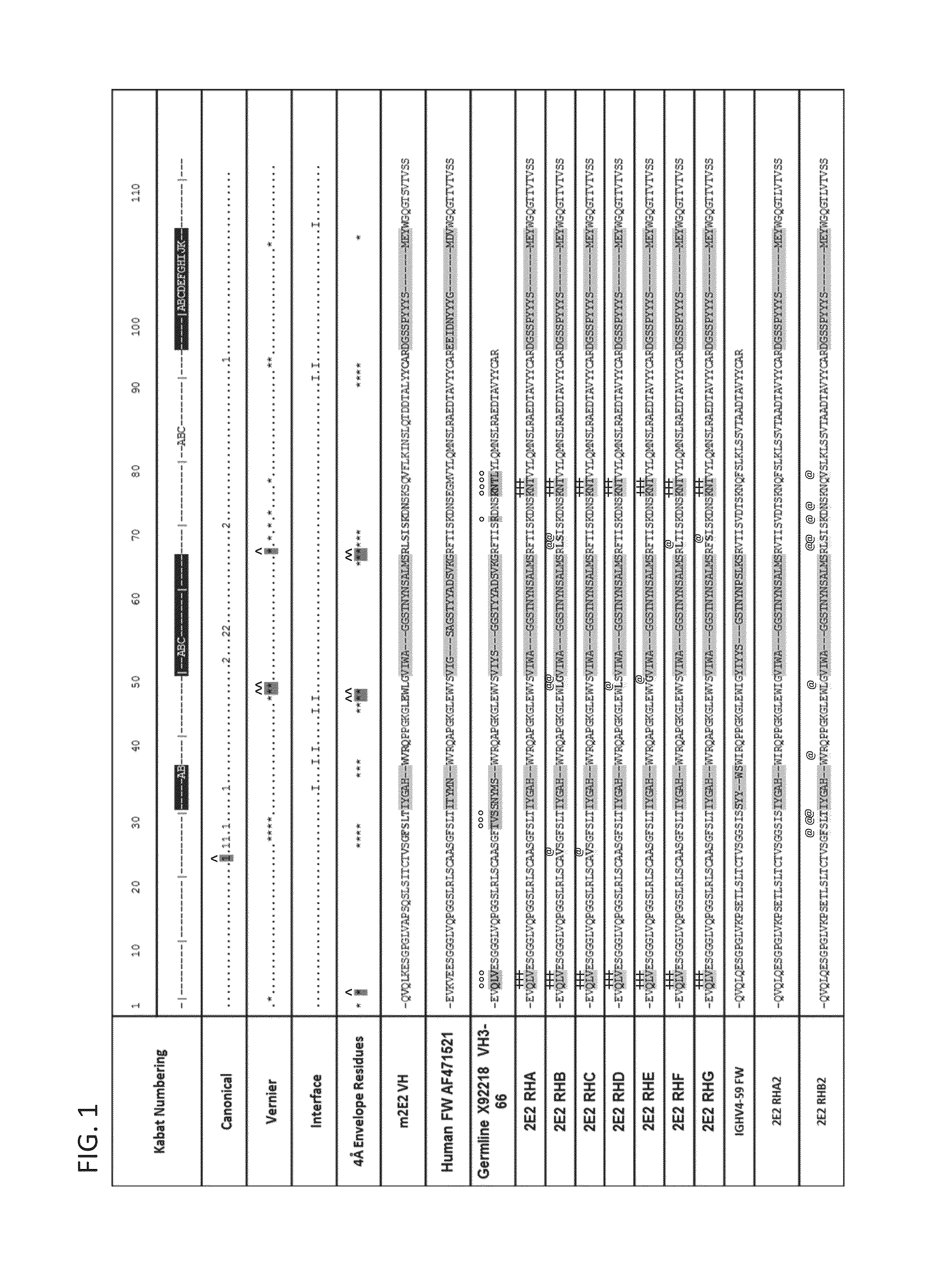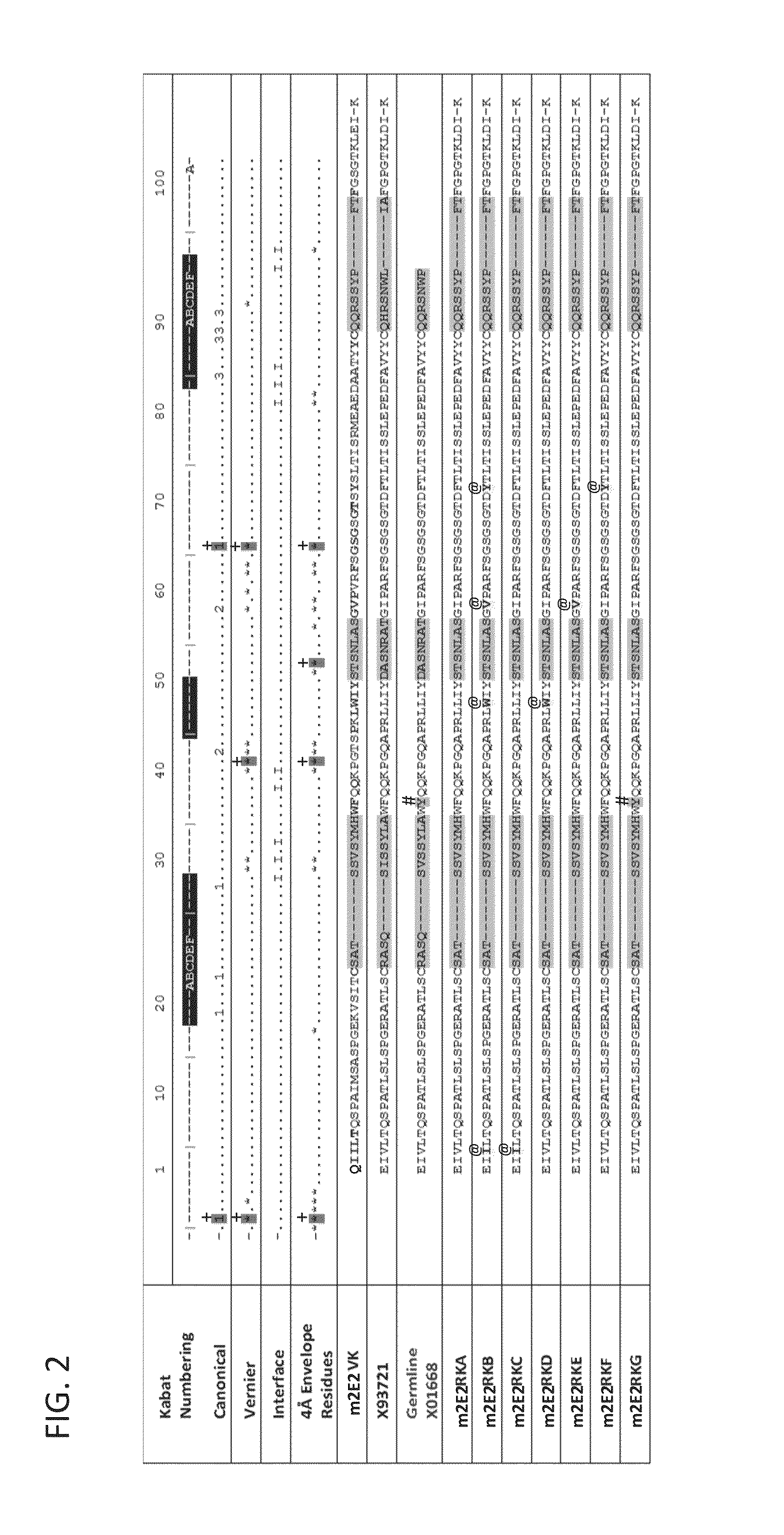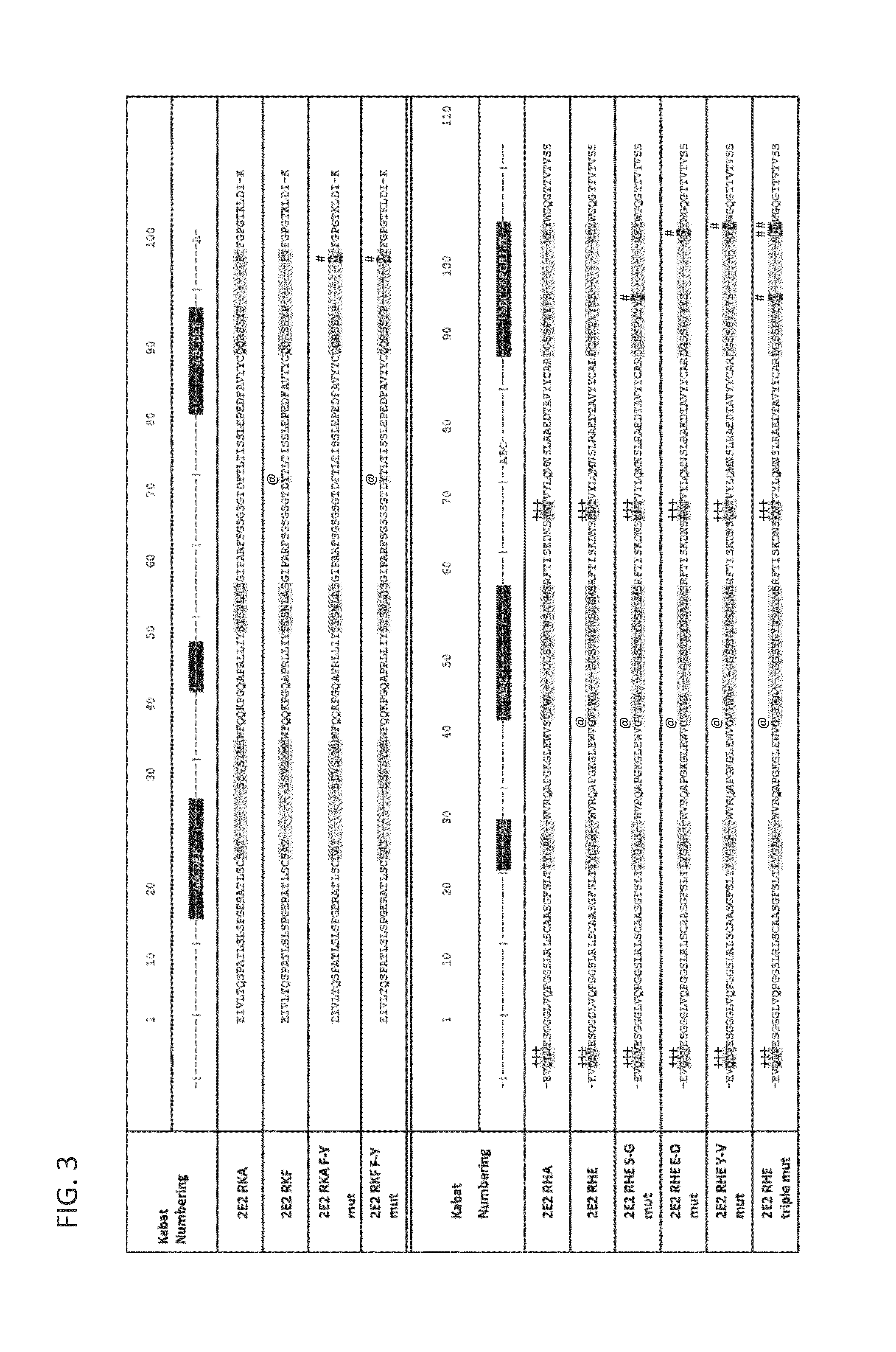Anti-siglec-8 antibodies and methods of use thereof
a technology of anti-siglec-8 and antibody, applied in the field of anti-siglec-8 antibodies, can solve the problems of tissue damage, inflammation to be further exacerbated, etc., and achieve the effect of improving antibody-dependent cell-mediated cytotoxicity activity and improving adcc activity
- Summary
- Abstract
- Description
- Claims
- Application Information
AI Technical Summary
Benefits of technology
Problems solved by technology
Method used
Image
Examples
example 1
Generation and Characterization of Chimeric Anti-Siglec-8 Antibodies
[0306]Chimeric antibodies were generated from the mouse 2E2 antibody and mouse 2C4 antibody, and were subsequently analyzed for binding activity to human Siglec-8.
[0307]Methods and Results
Generation of Chimeric 2E2 Antibody (ch2E2) and Chimeric 2C4 Antibody (ch2C4)
[0308]For generation of a chimeric 2E2 antibody (ch2E2), snap-frozen mouse hybridoma 2E2 cell lysates were processed using the RNeasy Mini kit (Qiagen) to isolate total RNA according to the manufacturer's protocol. A 3 μg sample of isolated RNA was reverse-transcribed to produce 2E2 cDNA using the 1st strand cDNA synthesis kit (GE Life Sciences) according to the manufacturer's protocol. 2E2 cDNA was subsequently amplified by PCR using Phusion Flash High-Fidelity PCR Master Mix (Thermo Scientific) and the sequences in the PCR reactions were confirmed. The immunoglobulin heavy chain variable region (VH) cDNA and kappa light chain variable region (VL) were PC...
example 2
Generation and Characterization of Humanized Anti-Siglec-8 Antibodies
[0313]The sequence of the chimeric antibody 2E2 and chimeric antibody 2C4 was used to design humanized versions of the mouse 2E2 antibodies.
[0314]Methods and Results
Design of Humanized Anti-Siglec-8 Antibodies
[0315]The protein sequences of human and mouse immunoglobulins from the International Immunogenetics Database 2009 (Lefranc, M P., Nucleic Acid Res., 2003, 31(1):307-10) and the Kabat Database Release 5 of Sequences of Proteins of Immunological Interest (last update 17 Nov. 1999) (Kabat et al., NIH National Technical Information Service, 1991, 1-3242) were used to compile a database of human immunoglobulin sequences in Kabat alignment. The compiled database contained 10,906 VH and 2,912 VK sequences.
[0316]A homology model of mouse antibody 2C4 variable regions had been calculated using the Modeller program (Eswar et al., Curr. Protoc. Bioinformatics, 2006, Ch. 5:Unit 5.6) included in the Discovery Studio packa...
example 3
Generation and Characterization of Murine Anti-Siglec-8 Antibodies
[0362]The extracellular region of Siglec-8 is composed of three immunoglobulin-like domains: a unique N-terminal V-set domain (Domain 1) that binds ligands, followed by two C-set domains (Domains 2 and 3). Antibody 1C3 is a murine monoclonal antibody with an IgG2a heavy chain and kappa light chain raised against a recombinant extracellular domain of human Siglec-8 (SEQ ID NO:74). Monoclonal antibodies 1H10 and 4F11 are murine IgG1 heavy chain and kappa light chain antibodies raised against a recombinant extracellular domain of human Siglec-8 (SEQ ID NO:74). See Table 13. These antibodies were identified from a hybridoma screen for antibodies that bound to recombinant Siglec-8 sequences from human (SEQ ID NO:74) and non-human primates (SEQ ID NO:118).
TABLE 13 Amino acid sequences of HVRs from murine 1C3, 1H10, and 4F11 antibodiesAntibodyChainHVR1HVR2HVR31C3HeavySYAMSIISSGGSYTYYSDSVKGHETAQAAWFAYChainSEQ ID NO: 88SEQ ID ...
PUM
| Property | Measurement | Unit |
|---|---|---|
| Tm | aaaaa | aaaaa |
| Tm | aaaaa | aaaaa |
| Tm | aaaaa | aaaaa |
Abstract
Description
Claims
Application Information
 Login to View More
Login to View More - R&D
- Intellectual Property
- Life Sciences
- Materials
- Tech Scout
- Unparalleled Data Quality
- Higher Quality Content
- 60% Fewer Hallucinations
Browse by: Latest US Patents, China's latest patents, Technical Efficacy Thesaurus, Application Domain, Technology Topic, Popular Technical Reports.
© 2025 PatSnap. All rights reserved.Legal|Privacy policy|Modern Slavery Act Transparency Statement|Sitemap|About US| Contact US: help@patsnap.com



